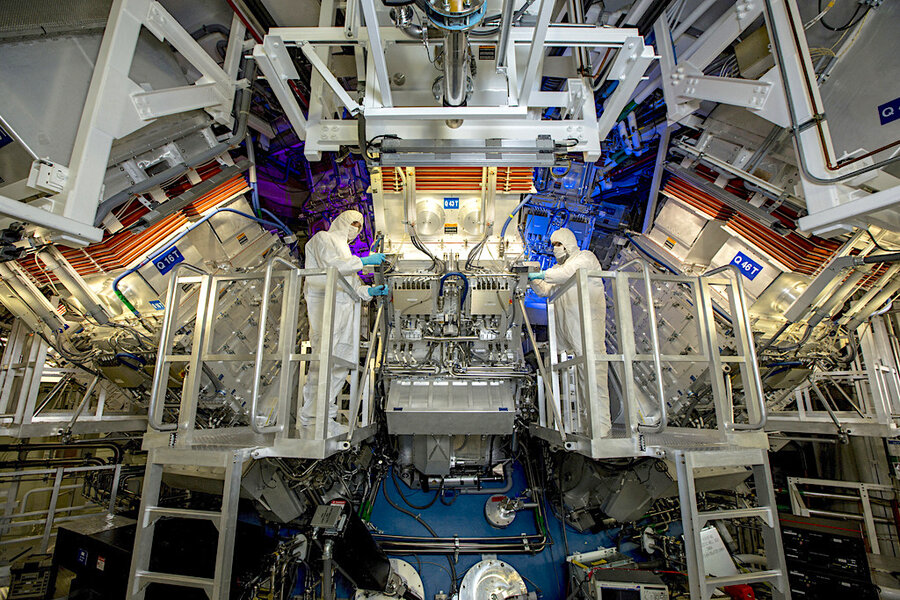Harnessing star power
Loading...
For the first time, an experiment in nuclear fusion has produced more power than it consumed in making it. That milestone holds huge potential for the world’s energy security beyond the era of fossil fuels.
The numbers for this achievement are daunting. Scientists at the National Ignition Facility in Livermore, California, shot 192 laser beams at a target smaller than a peppercorn, suspended in a chamber under temperatures 10 times hotter than the sun and twice the pressure at its core. The accuracy of the shot had to be within five-trillionths of a meter, its timing within 25-trillionths of a second. The whole event required less time than it takes light to travel an inch.
But think of it in terms of the nonmaterial values that were at work in creating this scientific breakthrough: insight into the laws of the universe, precision in applying them, and faith in the progress of human knowledge. This historic success is about “seeing what was possible,” said Alex Zylstra, the lab’s principal experimentalist.
Fusion is one of the most common physics processes in the universe, the core activity of every star, including the sun. But reproducing it has posed one of the greatest scientific challenges. There are nearly 100 laboratories worldwide developing different models for fusion. Nearly 40 more are being planned or constructed. Private enterprises have proliferated in the past five years.
It’s not hard to see why interest is accelerating. The fuel inputs for fusion are abundant on Earth – enough to power humanity’s needs for at least 2,000 years, perhaps indefinitely. It is carbon-free, and its radioactive byproduct dissipates quickly. It holds the potential of not just moving humanity beyond dependence on fossil fuels, but also removing carbon already emitted into the atmosphere. Significant scientific and engineering challenges remain. But the Biden administration has set a goal of making fusion commercially viable within a decade.
“We were in a position for a very long time where [commercialization] never got closer,” said Kim Budil, director of the Lawrence Livermore National Laboratory, where the National Ignition Facility is based, “because we needed this first fundamental step. So we’re in a great position today to begin understanding just what it will take to make that next step."
At a moment of profound concern about the future of life on Earth, a brief starburst in a bucket has given a new view of unprecedented potential. In a hundred-trillionth of a second, humanity has caught a new glimpse of thought unbound.







